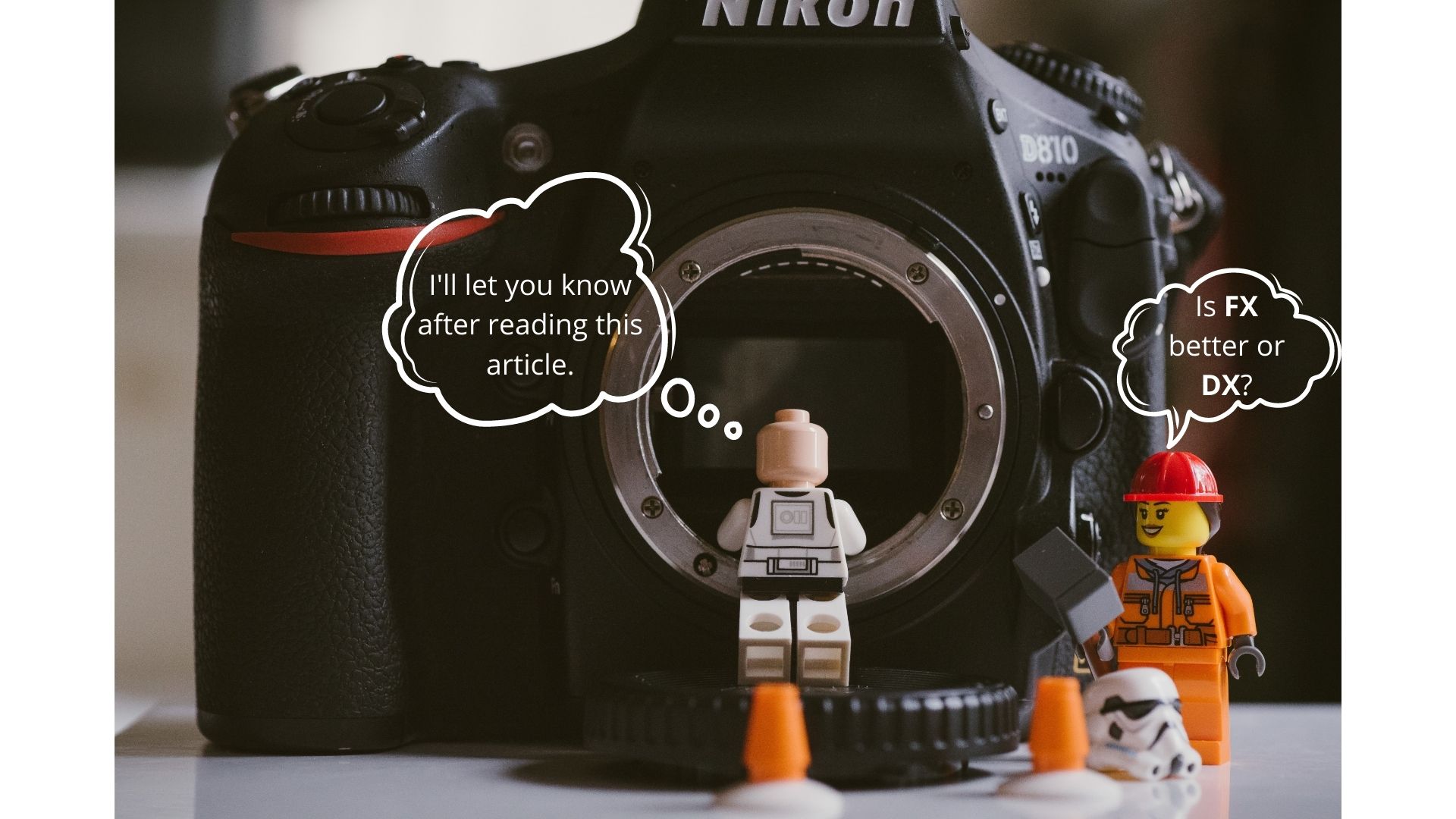A little bit of knowledge about these two formats lead to the FX vs DX camera comparison. Among the frequently asked questions from the users or readers is about DX and FX-format sensors. What is the difference between DX and FX-format cameras? Which is the superior option, and why?
This page is for you if you have similar queries and want to learn briefly more about these formats and their distinctions with the sample images.
Before getting into sensor formats, it’s important to know what a sensor is and what it does in a Digital SLR camera.
What is the camera format(FX vs DX camera)?
The camera sensor format that is referred to as the camera format, is the size and shape of the camera sensor. The sensor is the element that catches the image. There exist two popular camera formats in the world of Digital SLRs i.e. DX and FX.
The sensor is the most important mechanism in a camera. Sensors come in a variety of sizes, ranging from smartphones to big formats.
The image obtained through the lens is recorded on an image sensor, which is made up of photosites. The image processor receives the data from the sensor and assembles the pixels into a recognizable image. A bigger sensor catches more light eventually resulting in a better quality image.
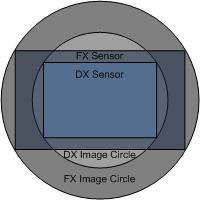
Lenses also have formats, just like a camera. Learn more about the lens format
Understanding the camera format from the Human eye
The lens in front of the camera acts like the cornea of your eyes, collecting ambient light and sending it to the iris. The iris then extends or contracts, regulating the amount of light that enters the retina, which works similarly to a camera sensor.
The retina is light-sensitive, which means it can change its sensitivity depending on the amount of light present. When there is too much light, it reduces sensitivity, but in a dim environment, it automatically increases sensitivity, allowing you to see in both extremely bright and extremely dark settings.
What is DX Format?
DX-format has a smaller sensor With a 1.5x crop factor. Nikon uses the DX-format as an alternative for the APS-C image sensor as it measures approximately 24x16mm. This format sensor is 2/3 the size of an FX sensor.
The camera with this format provides a modest magnification of the image being photographed. This permits a subject to be recorded closer to the circle’s center of the image. Thus, cutting the corners and creating a vignette effect around the frame’s boundaries.
The DX sensor enables the creation of smaller and lighter cameras with excellent image quality.
APS-C size sensors are also used in a few digital rangefinders.
Give a read to these articles of some APS-C sensor cameras to make yourself aware of what a crop sensor / DX camera is able to do:
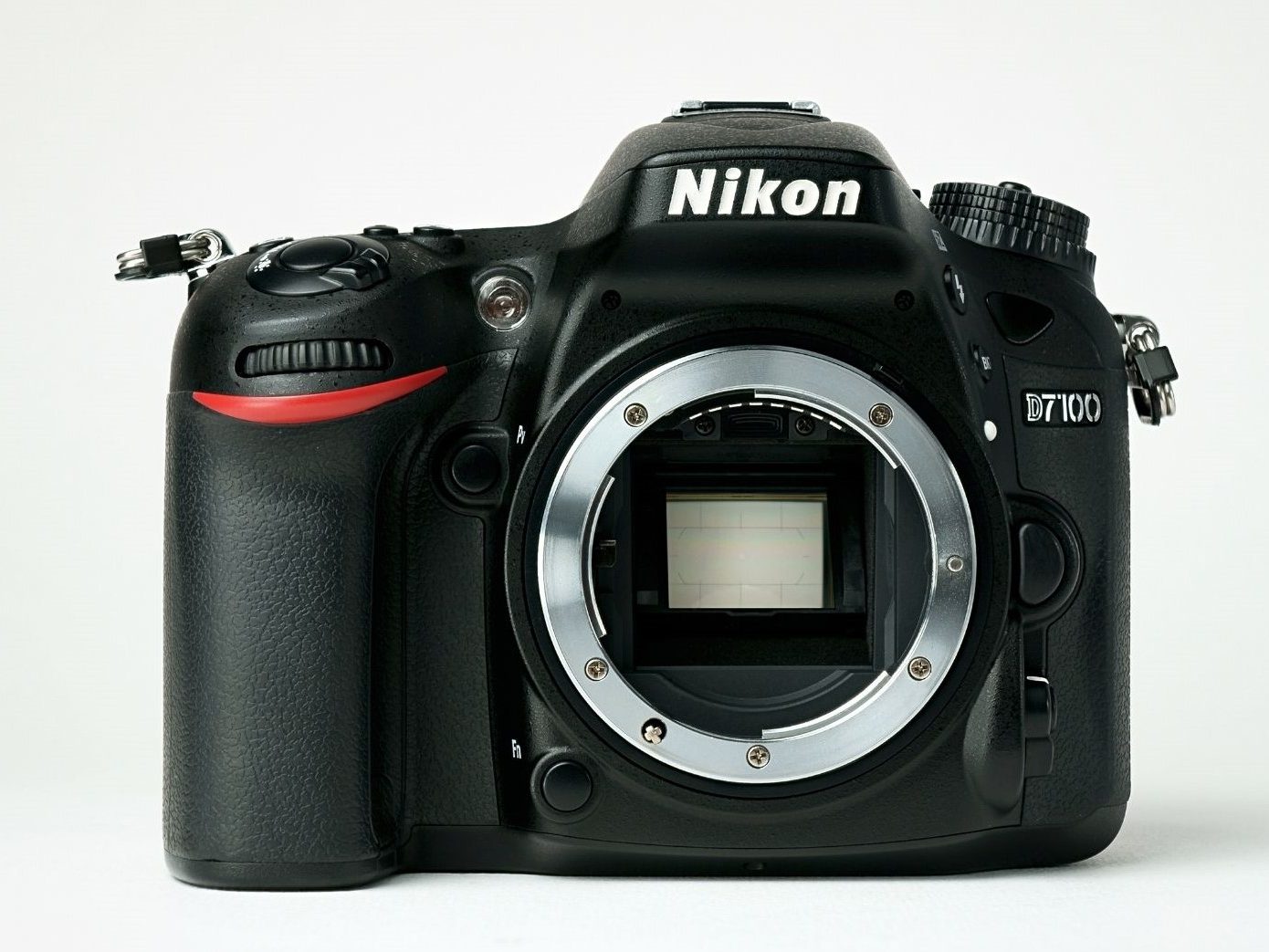
What is FX Format?
FX-format cameras have a large sensor and it is roughly 36mm x 24mm in size. Because the sensor is the same size as a standard 35mm still image frame, this is also known as a full-frame format.
The FX sensor’s larger size allows for greater sensitivity and lower noise. This results in a very appreciable low-light performance. With the use of larger pixel size, the big viewfinder allows for a greater emphasis on minute details.
This full-frame sensor format also has two versions for distinct needs: one focuses on speed and sensitivity, while the other is more concerned with resolution.
Give a read to these articles of some FX sensor cameras to make yourself aware of what a full sensor / FX format camera is able to do:
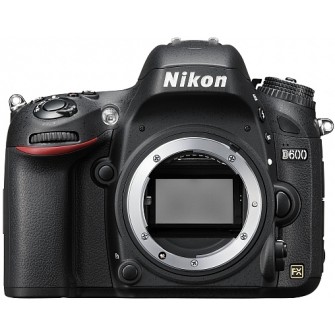
Advantages and Disadvantages of DX Format
Here are the details of the advantages and disadvantages of the DX format. After having a detailed idea of the two formats, advantages and disadvantages will decide for you which one is superior in FX vs DX camera formats.
Pros of DX Format
The advantages/pros of the DX format are:
- Budget-friendly cameras
- More sharp photos and less vignetting
- Lens sharpness
- Low-cost lenses
- Lightweight and small size
- Easier to transport
- Versatility
Budget-Friendly cameras
Small sensor costs less to the manufacturers, thus the cameras with DX sensor are cheaper and more budget-friendly.
More sharp photos and less vignetting
A small sensor brings the image closer to the image circle’s center. This usually results in better sharpness of photos and decreased vignetting (darkening) around the frame’s edges.
Lens Sharpness
Many professional lenses will perform incredibly well on the DX sensor cameras. Because the center of the lens is always designed for sharpness rather than the extreme corners, so is the mechanism of the DX sensor. Thus the camera and lens working on the same mechanism give exceptional results in the form of high pixel photos.
Due to the lack of corners on DX bodies, vignetting is often considerably less prominent than on FX bodies. The earlier version of the Nikon 70-200mm VR II lens, for example, worked admirably on DX bodies but horribly on FX bodies, prompting Nikon to replace it with a superior version for full-frame cameras.
Low-cost lenses
Manufacturers began selling smaller and more compact lenses for DX sensors, which cost less than conventional lenses for film and full-frame sensors. Because the corners are taken off for the DX format anyhow.
Low weight and small size
Due to the small sensor, DX-format cameras are lightweight and small in size.
Easy to carry
It is quite easy to adjust the cameras that are not bulky and large into bags. Many extraordinary designed bags of different qualities are available on the market for this purpose. Therefore these cameras can be carried easily.
Versatility
All “regular” lenses, as well as specifically made smaller lenses, can be used. This makes this format more versatile.
Cons of DX-format
The disadvantages/cons of DX-format are:
- Noise in high ISO levels
- Problems with wide-angle lenses
- Less dynamic range
- Incompatibility of dx lens with FX
- Lens diffraction
- Small viewfinder
- Poor performance in low-light situations
Noise in high ISO levels
The major downside of DX is the lower pixel size, which leads to noisy images with less sharpness and detail at higher ISO levels.
Problem with wide-angle lenses
Wide-angle lenses are no longer as wide on a DX camera due to the depth of field differences. When compared to a full-frame, a 14mm ultra-wide-angle lens is more like a 21mm lens, which means you can fit a lot less in your frame.
Less dynamic range
DX cameras typically have a less dynamic range as compared to FX cameras.
Incompatibility of DX lenses with FX
If you have DX lenses and want to transition to FX in the future, you’ll need to buy full-frame lenses to make use of the larger/full-frame sensor. Due to the narrower picture circle, DX lenses function with FX sensors, but at half the resolution.
Lens diffraction
When using lower apertures than f/8, DX sensors generate higher lens diffraction.
Smaller viewfinder
The viewfinder on DX cameras is smaller and less brilliant than on FX. This is due to the smaller mirror and pentaprism/pentamirror utilized on DX cameras.
Poor performance in low light situations
Small sensors let not enter enough amount of light into the camera in low light conditions. So, the image loses its sharpness and shows grainy visual distortion.
Noise in high ISO levels and poor performance in low light situations combined make a great downside for the DX-format when it comes to Full-frame DSLR vs DX camera. Particularly, if someone wants to take long exposure shots in low lighting.
Advantages and Disadvantages of FX format
Here are the details of the advantages and disadvantages of the FX-format.
Pros of FX Format
The advantages/pros of FX-format are:
- Scalability
- Higher sensitivity and lower noise
- Large dynamic range
- Lens compatibility
- Lens diffraction
- No field of view issue
- Brighter and larger viewfinder
Scalability
FX-format provides two distinct configurations for various demands because of the big size of the sensor. One with a lot of resolution (Nikon D850) and one with improved sensitivity and speed (Nikon D5).
Landscape and fashion photographers, for example, require huge print sizes and higher quality. Meanwhile, wildlife and sports photographers require the capabilities of a fast-action camera, such as the Nikon D5.
Higher sensitivity and lower noise
The camera’s sensitivity levels, as well as noise levels at high ISOs, are heavily influenced by pixel size.
For example, the Nikon D700 (FX) has a similar amount of pixels as the Nikon D90/D300s (DX), but the D700’s pixels are substantially larger in size. When comparing ISO 800 on these cameras, the Nikon D700 image looks considerably cleaner than the Nikon D90/D300s image.
Large dynamic range
Again, larger pixel sizes allow for the collection of more light particles, resulting in a greater dynamic range than DX.
Lens compatibility
The image sensors on this great dynamic range are highly developed, measuring 36mm x 24mm wide, allowing for increased sensitivity and exceptional low-light performance.
FX lenses are backward compatible with DX lenses, which means they can work perfectly on DX bodies as well.
Lens diffraction
Lens diffraction is more common on 35mm film than on DX, and it starts to compromise image clarity at narrower apertures above f/11.
No field of view issue
Forget about “crop factor” and “equivalent focal length” when shooting with FX; you’ll obtain a similar field of vision as if you were shooting film.
Brighter and larger viewfinder
A large sensor entails a huge mirror and pentaprism, resulting in a larger, brighter viewfinder. Focusing is significantly easier with a big viewfinder since you can see more details.
Cons of FX format
The disadvantages/cons of the FX-format are:
- Higher cost
- Lens sharpness and vignetting
- Size and weight
Higher cost
Because of higher manufacturing costs, the sensor’s size and quality put it at a higher price point. High cost is on the side of FX vs DX camera format are quite budget-friendly.
Lens sharpness and vignetting
Vignette blurring is a prevalent problem. This happens when the circle focus of the lens is in the center of the frame and the corners aren’t entirely captured. Because FX sensors cover a significantly wider surface on the lens than DX sensors. Therefore, lens corner performance may be a challenge.
Though Nikon has been updating their lens line and producing new lenses that give outstanding corner performance for FX sensors. The Nikon 14-24mm f/2.8G and Nikon 24-70mm f/2.8G lenses, for example, were both created with the full-frame sensor in mind.
Size and weight
FX cameras are often heavier than their DX counterparts due to greater internal components. They are also less compact than DX-format cameras, making transportation more difficult.
Future of FX and DX formats
The DX-format is now only available to amateurs. That’s fine because the majority of serious photographers are novices. Nikon’s last professional DX camera, the D2Xs, was discontinued in 2007.
FX sensors are still quite expensive. Electronics have been cheaper every week for the past 50 years as circuits have shrunk in size, making them less expensive. An FX sensor is still a large piece of a silicon wafer that is and will remain, extremely expensive.
FX cameras will stay at the top of the line, and the most costly DSLRs, even if FX sensors mysteriously become free. There aren’t going to be any “cheap” FX DSLRs. The marketing industry does not work that way; FX cameras will be the top-of-the-line cameras. Digital isn’t like film, where a used large-format camera is less expensive than a 35mm SLR.
Choosing the image area in a DSLR camera
Selection of different image areas from the shooting menu is offered in the DX and FX-format cameras. Setting some different options for the image area permit you to shoot in different area crop mode, options differ between cameras.
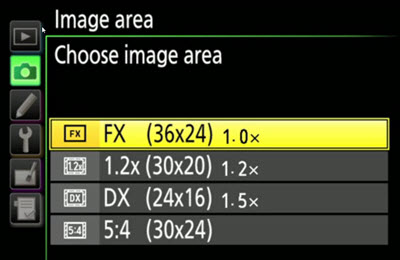
Conclusion
This FX vs DX camera comparison might go in the favor of the FX format for someone, meanwhile, it might go in the favor of the DX format for someone else. This all depends on the needs.
Depending on your needs such as light conditions, budget, still photography or motion control photography, choice of lenses, photography category, and transportation issues, you can select any format.
When it comes to overall image quality, the difference between DX and FX sensors is pretty obvious. FX takes a lead over DX but not in price, cost, and transportation. The factor of using FX or DX lenses should also be considered.
The sensor size is significant, and FX demonstrates that it is a significantly more capable sensor than DX in terms of noise and dynamic range. When employing lenses, you must also account for variances in the field of view. When it comes to lenses and focal lengths, what you see is what you get with FX / full-frame cameras. To grasp differences in the field of vision with DX cameras, you must use crop factor math.
Finally, remember that the type of camera you use (FX vs DX camera or vice versa) isn’t as crucial as the quality of your images. Light, subject, emotion, composition, and post-processing techniques are significantly more important, and these are the areas where you should focus your efforts.
DX Sensor Format Camera Photo Samples
These are the photos taken by the camera that has a DX sensor.


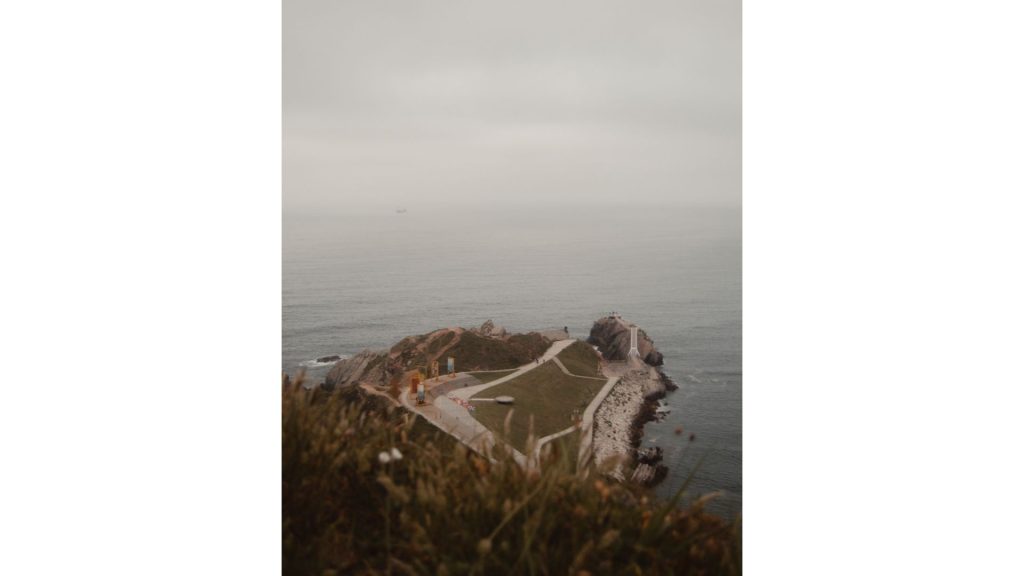
FX Sensor Format Camera Photo Samples
These are the photos taken by a camera featuring an FX sensor.
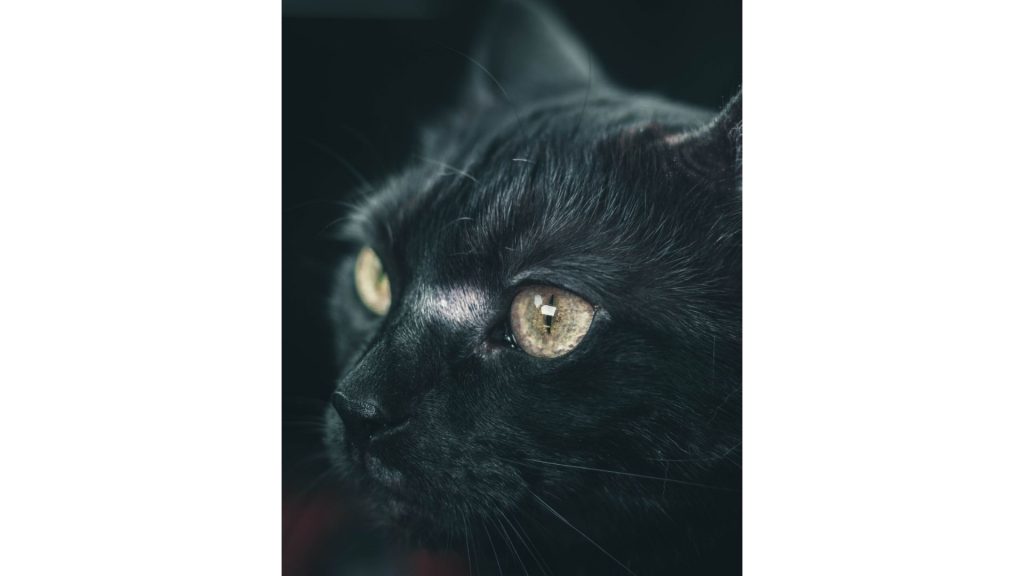
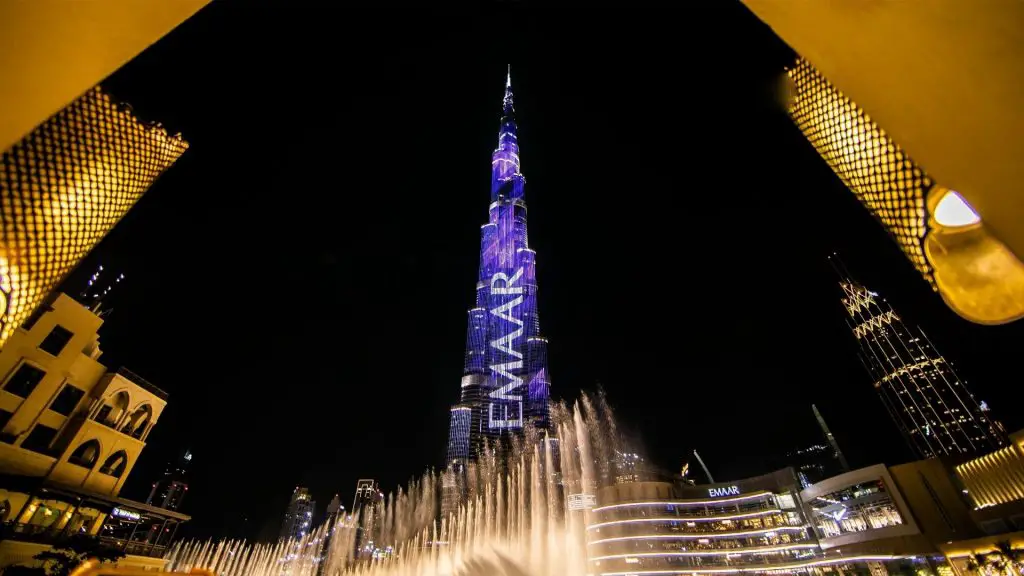
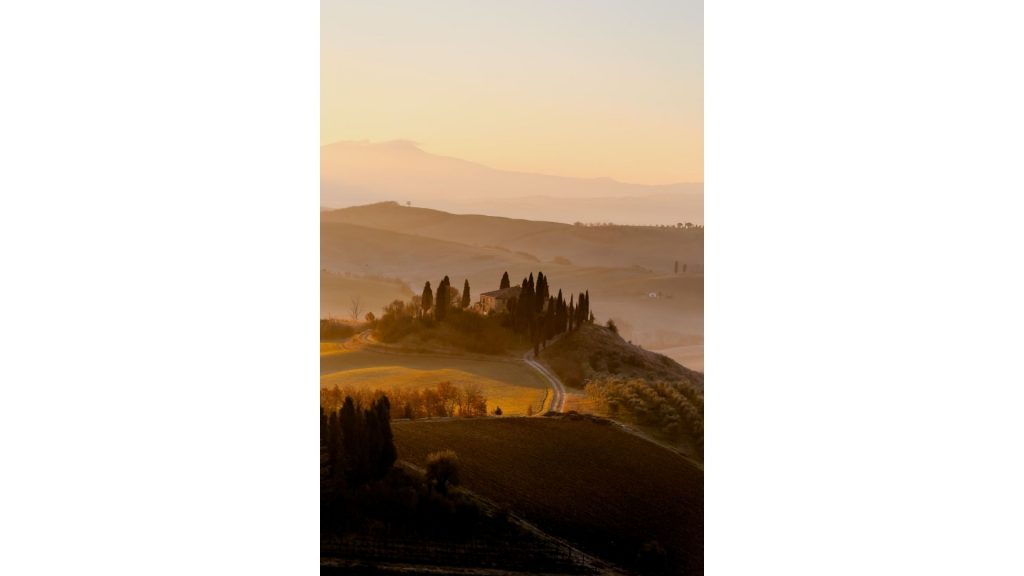
FAQs
Is FX full-frame?
Yes. Full frame camera bodies and lenses are available for FX cameras. With a more “light gathering” surface, the FX sensor has higher sensitivity and, in general, reduced noise. Of course, when using an FX or full-frame lens with an FX sensor, there is no crop factor.
Does DX mean crop sensor?
Yes. A crop sensor is any sensor that is smaller than 35mm format (including DX). FX-format cameras, sometimes known as full-frame cameras, use the 35mm film format. A DX camera and lens system can capture a smaller area of the image (than an FX camera) due to a smaller image sensor, which is known as the crop factor.
Is FX better than DX?
Yes. Full-frame camera bodies and lenses are available for FX cameras. With a more “light gathering” surface, the FX sensor has higher sensitivity and, in general, reduced noise. A DX lens casts a smaller circle, which matches the size of a DX sensor. Non-DX lenses produce a bigger picture circle than FX-format sensors.
Is Nikon D5100 a DX or FX?
Nikon introduced the Nikon D5100, a 16.2-megapixel DX-format DSLR F-mount camera, on April 5, 2011. It has the same 16.2-megapixel CMOS sensor as the D7000, with 14-bit depth, and can shoot Full HD 1080p video at 24, 25, or 30 frames per second.
Is Nikon D7200 a DX or FX camera?
The D7200, on the other hand, is the cream of the DX crop. The f/1.4’s small depth of field and excellent low-light performance will appeal to enthusiasts, and because it’s an FX lens, it can also be used on full-frame cameras (on the D7200, it’s comparable to 75mm).
